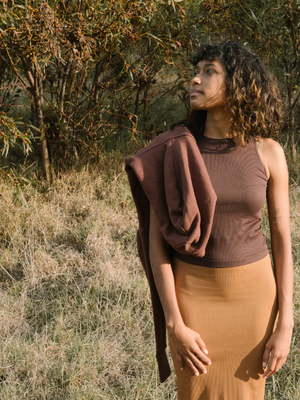Tinea Versicolor
When it comes to tinea versicolor, the cause is something that lives naturally on your skin. Generally, the strain of fungus (a kind of Malassezia yeast) that causes this discoloration usually lives harmlessly and without detection on the skin; in fact, the majority of people carry this type of fungus on their skin without any problems at all.
However, for some people, the fungus can grow too much or too fast, causing the characteristic symptom of tinea versicolor. This overgrowth can occur for several reasons. Firstly, hot or humid weather or living conditions can speed up the growth of this yeast. Changes in the body, including hormonal changes and a weakened immune system, can also be causative factors. People with oily skin may also find that they are at greater risk of developing the condition. What's important to note, though, is that tinea versicolor is a result of factors affecting the body's natural fungi, so it is not contagious or caught by another person.
Ringworm (Tinea Corporis, Tinea Capitis and Tinea Cruris)
This is very different from other forms of tinea. Ringworm (also known as tinea capitis if you develop it on your scalp, tinea cruris or jock itch if it occurs on the groin or buttocks, or tinea corporis when it's elsewhere on the body) is not actually a worm; this is a common misconception. Like all kinds of tinea, this is a fungal infection.
These fungi, known as dermatophytes, also live on the skin of affected people or animals. The growth of this fungus on the skin causes an itchy, red, raised circle that has lighter skin in the middle; this red, often ring-shaped patch is where the common name 'ringworm' derives from.
Because ringworm is highly contagious, this fungus is very transmissible from person to person—or, indeed, animal to person. The dermatophytes can live on soft surfaces, including unwashed bedding, towels, and clothing, as well as unsterilized harder surfaces like sports equipment, surfaces, brushes, and combs, for a long time. If you touch these - or the affected skin of a person or animal with ringworm - with your own skin, and particularly if you have any broken skin, the dermatophytes are more likely to be transmitted to you.
Athlete's Foot (Tinea Pedis)
The same is the case with tinea pedis, the fungal infection of the feet most commonly known as athlete's foot. Dermatophytes from another person with a current case of athlete's foot will live happily on the floor for long periods of time; they are especially able to thrive and multiply in damp, humid conditions, which makes areas like locker rooms, pools, and communal showers big culprits for the spread of the condition.
If you walk barefoot in these damp conditions and a person with an athlete's foot has walked there before you, the dermatophytes may spread to your own skin. When this fungus multiplies on the skin of your feet—sped up by sweaty socks or wearing enclosed shoes for long periods—you will develop the symptoms of athlete's foot, too.
Fungal Nail Infections (Tinea Unguium)
The same conditions may also cause tinea unguium, a kind of fungal nail infection. If you have a particularly severe case of athlete's foot, your nails are damaged, or you share nail clippers or scissors with someone with the infection, the dermatophytes may invade your nails, too. As is the case with athletes' feet, dermatophytes present in swimming pools or on damp, moist surfaces like the floors of locker rooms or communal showers may cause tinea unguium, too.






